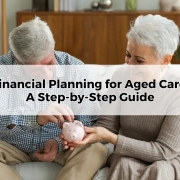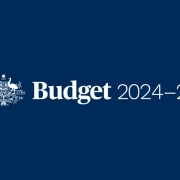Financial Pitfalls to Avoid When Planning for Aged Care
Table of Contents
ToggleAged care represents one of the most significant financial commitments many Australians will face in later life. As the population ages, planning for the associated costs becomes increasingly crucial. Failure to adequately prepare for the intricacies of aged care can lead to substantial financial strain, both for the individual requiring care and their family. It’s essential to adopt a forward-thinking approach, incorporating all potential costs and scenarios into your financial strategy to ensure both quality care and financial stability. Aged care planning is not just about funding care—it’s about protecting your financial legacy.
Misunderstanding the True Costs of Aged Care
Many Australians underestimate the true costs of aged care, focusing solely on accommodation fees without considering the broader spectrum of expenses. Aged care facilities often charge for additional services such as specialised medical care, therapy, and daily living activities, which can quickly add up. Moreover, out-of-pocket expenses like personal care items, entertainment, and premium accommodation upgrades can further inflate costs. It’s important to take a holistic view of aged care expenses, budgeting for both the expected and unexpected costs to avoid financial surprises down the track.
Neglecting to Plan for Rising Care Costs
Inflation and increased care needs over time can significantly affect aged care costs. As individuals age, their care requirements often escalate, resulting in higher fees for more intensive support. Additionally, inflationary pressures can increase the cost of accommodation, daily care fees, and ancillary services. Failing to account for these future increases in your financial plan can leave you short on funds when they are most needed. Planning for rising costs involves not only budgeting for current expenses but also setting aside a contingency fund to cover potential future increases in care fees.
Failing to Comprehend the Role of Means-Testing
Means-testing is a critical component in determining how much you will pay for aged care services. The Australian government assesses your assets and income to calculate your contribution to aged care costs. Many people fail to understand how their financial position impacts the fees they’ll be required to pay, leading to unexpectedly high costs. Assets such as property, superannuation, and investments are taken into account, and structured poorly, they can lead to higher fees. It’s essential to consult with a financial adviser who can help optimise your asset structure to minimise your contribution to aged care costs.
Overlooking Accommodation Payment Options
One of the key decisions when entering aged care is choosing between a Refundable Accommodation Deposit (RAD) and Daily Accommodation Payments (DAP). A RAD requires a lump sum payment, which is refunded when the resident leaves or passes away. In contrast, a DAP involves ongoing payments that can be easier to manage in the short term but can accumulate over time. Each option has significant implications for your financial situation, and the wrong choice can tie up valuable assets or leave your estate diminished. Careful consideration of your cash flow, assets, and financial goals is needed to make the right decision.
Not Considering the Financial Impact of Gifting Assets
Gifting assets, whether to reduce your asset base for means-testing purposes or to assist family members, can have unintended financial consequences. The Australian government has strict rules regarding the gifting of assets and may continue to count gifted amounts as part of your asset pool for up to five years. This can result in higher aged care fees and reduced pension entitlements. It’s critical to understand the timing and value of gifts to ensure they don’t adversely impact your aged care plans. Financial advice is essential in navigating the complex rules around gifting and means-testing.
Ignoring Taxation Issues Related to Aged Care
Taxation is another often overlooked aspect of aged care planning. Various financial decisions, such as selling the family home, accessing superannuation, or receiving income from investments, can trigger tax liabilities. Additionally, if a RAD is paid using certain types of investments, it can result in capital gains tax or affect your taxable income. Mismanaging these issues can lead to increased tax bills, further eroding the funds available for aged care. A comprehensive tax strategy is essential to minimise the tax burden and ensure that more of your wealth is preserved for your care and estate.
Mismanaging Superannuation and Retirement Income Streams
Superannuation and retirement income streams form the foundation of many Australians’ financial plans, but poor management of these resources can lead to higher aged care costs. For example, drawing down too much from superannuation can increase assessable income and result in higher means-tested care fees. Conversely, under-utilising super can leave you short of cash for day-to-day care expenses. It’s important to strike the right balance between maintaining a steady income stream for care and managing your superannuation withdrawals to minimise assessable income.
Over-relying on Government Subsidies and Pensions
Many Australians mistakenly believe that government subsidies and pensions will cover the bulk of their aged care costs. However, the reality is that government support is often limited, particularly for those with significant assets or income. The Age Pension, while helpful, rarely covers the full cost of residential aged care or home care services, leaving individuals to bridge the gap. Relying too heavily on government assistance can leave you vulnerable to financial shortfalls. A solid financial plan should account for the limitations of government support and incorporate additional income sources or savings to ensure care costs are fully covered.
Failing to Update Estate Plans to Reflect Aged Care Needs
Aged care planning and estate planning are intrinsically linked. Failing to update your estate plan to reflect the potential costs of aged care can lead to unintended consequences for your beneficiaries. As aged care expenses can deplete your assets, it’s essential to ensure that your estate plan accounts for these costs, particularly if you want to preserve an inheritance for your family. Regular reviews of your Will, superannuation nominations, and powers of attorney are necessary to ensure your estate plan remains aligned with your aged care needs.
Ignoring the Importance of Cash Flow Management
One of the most common financial pitfalls in aged care planning is neglecting to ensure sufficient cash flow to meet ongoing expenses. Many individuals tie up their assets in long-term investments or real estate, leaving them short on liquid funds to cover daily care fees or unexpected medical costs. Without adequate cash flow, you may be forced to sell assets prematurely or at a loss, further depleting your financial resources. Maintaining a balance between liquid assets and long-term investments is key to ensuring you have the flexibility to meet all aged care costs as they arise.
Conclusion
Avoiding the financial pitfalls of aged care requires comprehensive planning, foresight, and expert advice. From understanding the true costs of care to optimising your asset structure and managing your tax obligations, there are many complexities to consider. By adopting a proactive approach and working with a financial adviser who specialises in aged care, you can ensure that you’re well-prepared to fund your care without compromising your financial security or estate. Meticulous planning today can safeguard your tomorrow, providing peace of mind for both you and your loved ones.









